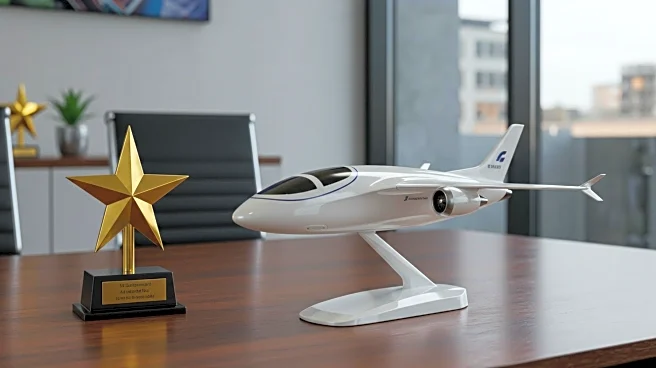What's Happening?
The Federal Aviation Administration (FAA) has released a draft advisory circular (AC) proposing new guidance for parts manufacturer approval (PMA) applicants. This guidance aims to define sample sizes for certification of engine and auxiliary power unit (APU) parts. The FAA has observed that PMA applicants often use statistical methods designed to detect differences rather than demonstrate equivalency to type certificate holder parts. The draft AC suggests two approaches: a 'practical' and a 'statistical' method. Industry feedback indicates that while sample sizes can demonstrate part equivalency, they may not be suitable for all applications. The Modification and Replacement Parts Association (MARPA) and the Aeronautical Repair Station Association have expressed concerns about the implications of mandatory statistical analysis for directly measurable features. The FAA is accepting public comments on the draft AC until September 12.
Why It's Important?
The proposed guidance by the FAA is significant for the aviation industry as it could impact the certification process for PMA parts. If implemented, the guidance may require PMA applicants to adhere to specific sample size methods, potentially increasing the complexity and cost of certification. This could affect manufacturers and repair stations, influencing their operational strategies and compliance costs. The industry pushback highlights concerns about the practicality and necessity of statistical methods for certain applications, which could lead to further discussions and modifications of the proposed guidance. The outcome of this proposal could set a precedent for future regulatory approaches in the aviation sector.
What's Next?
Stakeholders in the aviation industry are expected to submit comments and feedback to the FAA by the September 12 deadline. The FAA will review these comments and may revise the draft AC based on industry input. The ongoing dialogue between the FAA and industry groups could lead to adjustments in the proposed guidance, balancing regulatory requirements with practical industry needs. The final version of the AC will likely influence how PMA applicants approach certification processes in the future.
Beyond the Headlines
The debate over the FAA's proposed guidance reflects broader tensions between regulatory bodies and industry stakeholders regarding compliance and innovation. The aviation industry often faces challenges in balancing safety standards with technological advancements and cost efficiency. The outcome of this proposal could influence future regulatory frameworks, potentially affecting innovation and competitiveness within the sector.











